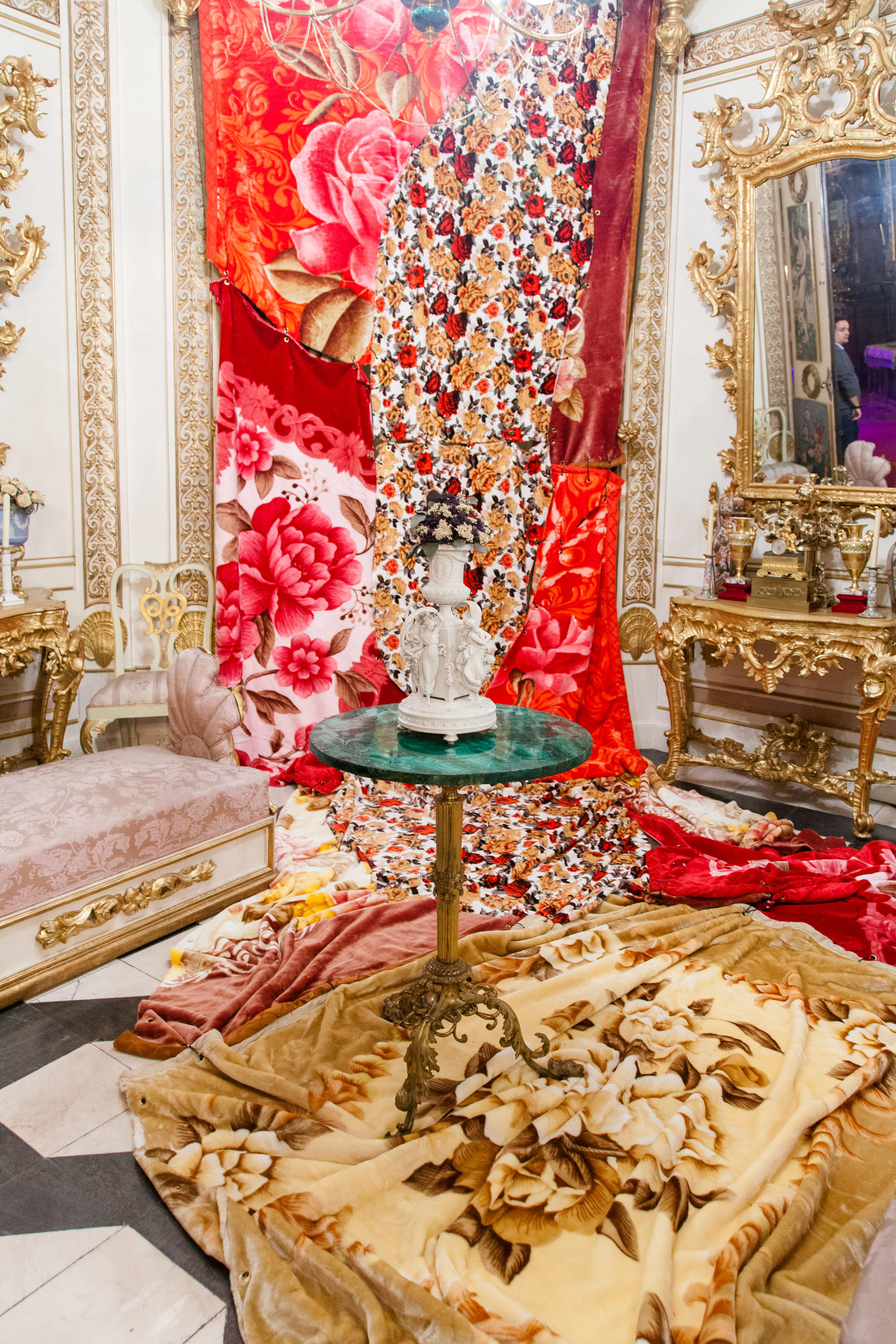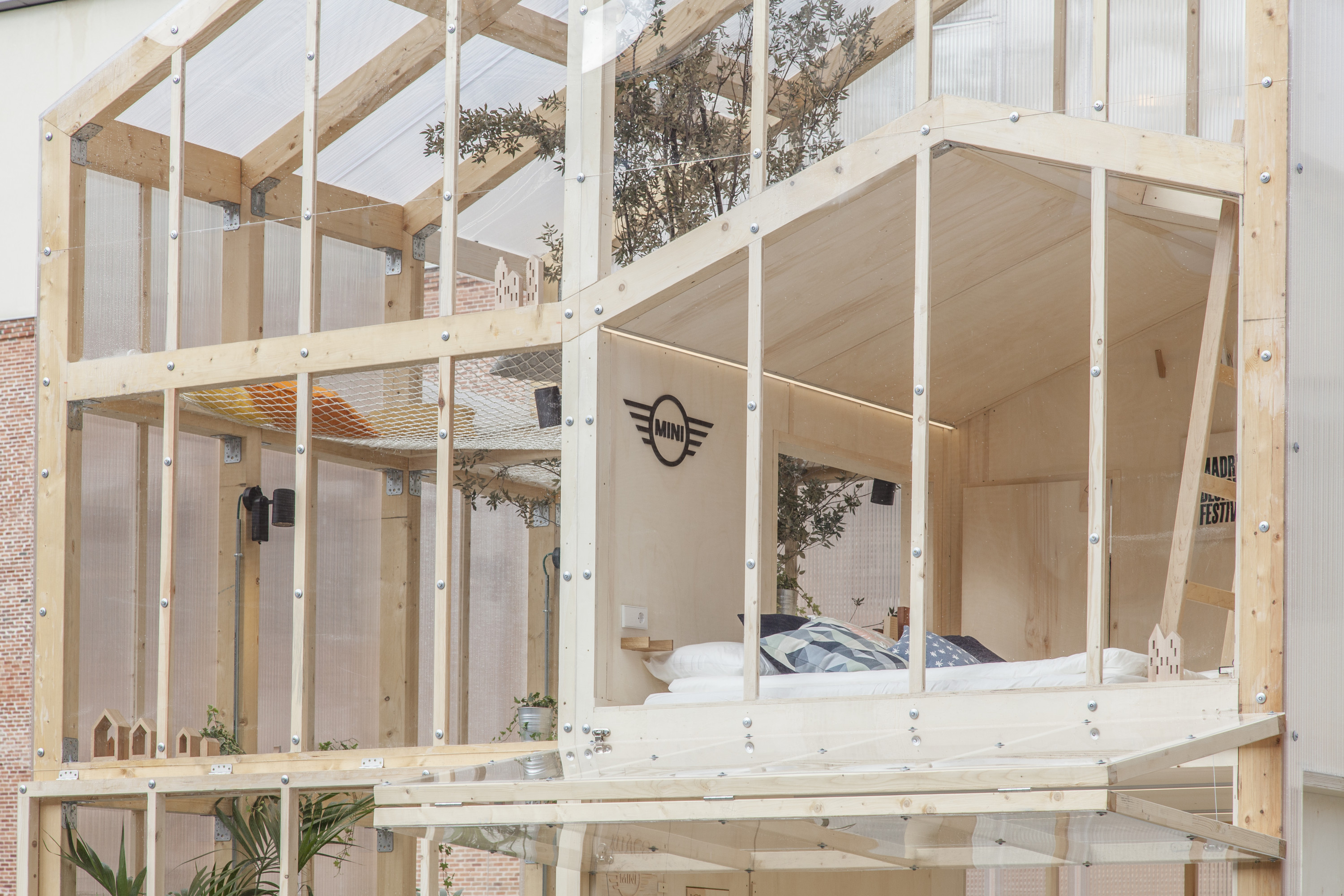Madrid se parece mucho a Nueva York, pero sin el ritmo frenético. El Madrid Design Festival iguala esa sensación con exposiciones bellamente comisariadas que animan a los visitantes a ir más despacio y tomarse realmente su tiempo para absorber el impacto del diseño en el mundo que nos rodea.
El festival, que celebra su segunda edición, presenta más de 250 actos, exposiciones e instalaciones, en los que participan diseñadores consagrados y prometedores de múltiples subdisciplinas.
Format tuvo la oportunidad de visitar el festival: aquí tienes lo más destacado del mejor diseño que España puede ofrecer.
Guillermo Santomà en el Museo Cerralbo
El Museo Cerralbo -antigua residencia de Enrique de Aguilera y Gamboa, XVII marqués de Cerralbo- alberga una colección de antigüedades casi abrumadora. Podrías pasarte días explorando la casa y aún te quedarían joyas por descubrir. El marqués legó su palacio (y todo su contenido) al Estado, captando a la perfección la opulencia de la aristocracia española del siglo XIX. Decir que me sentía poco elegante con mis Chuck Taylors en el salón de baile sería quedarse corto.
Para el festival, el arquitecto y diseñador español Guillermo Santomà integró esculturas de alto concepto de diversos materiales y tamaños por todo el museo. Las piezas sorprendieron y deleitaron a los visitantes, provocando jadeos audibles incluso en miembros de la realeza del diseño madrileño como Rosanna Orlandi y su séquito. (Imagina a Edna de Los Increíbles, pero que sea diseño.)
Un elemento clave del trabajo de Santomà es la fusión de la colección permanente con sus nuevas piezas, desdibujando los conceptos de tiempo y espacio. "Formamos parte de esta línea histórica, tenemos un pasado y podemos continuarlo", afirma. "Me cuesta entender cada pieza por separado. Todas las piezas son la misma pieza, el cuerpo sobre el que realmente trabajo es la relación de una pieza sobre otra".
Algunas de las piezas de Santomà, como Tapizse integran casi a la perfección en la colección permanente del museo.

Otras piezas destacan a la vez que animan a los visitantes a imaginar el uso continuado del espacio, como Discoteca en el salón de baile del palacio o Mesa de comedor en la sala de banquetes. Me encontré soñando despierta con el tipo de fiesta que celebraría en estos salones, desde la exclusiva lista de invitados hasta el menú tan chic.


Piezas impactantes como Sofá Miami se yuxtaponen fuertemente al sobrio telón de fondo barroco, tentando a los visitantes a tocar la viscosidad púrpura y blanda (para disgusto de los vigilantes guardianes del museo).

Darro: Diseño y Arte
Fundada por Paco Muñoz, la empresa de diseño Darro trajo el movimiento modernista a España en los años 50, incluso cuando la mayor parte del país seguía fiel a una estética más tradicionalista tras la guerra civil.
Por desgracia, Darro tuvo que cerrar sus puertas en 1979 debido tanto a los gastos de producción como a la falta de clientes. Muy poca gente, aparte de la clase alta más tradicional, tenía dinero para comprar muebles; éstos pasaban de generación en generación, manteniendo viva la estética tradicional por necesidad más que por preferencia personal.
Diseñador Pedro Feduchi comisarió minuciosamente 60 piezas que ponen de relieve cómo la empresa revolucionó el diseño industrial buscando y fomentando la modernidad en el diseño de interiores e industrial durante el franquismo. Al principio sólo encontró 10 piezas, por lo que la búsqueda se amplió a amigos, familiares y mercados vintage, utilizando como referencia antiguos catálogos en blanco y negro para hacer crecer finalmente la colección hasta más de 100 artículos.
La exposición destaca cómo Darro intentó acercar la modernidad a la gente. La tienda de la empresa funcionaba como escaparate, galería de arte y centro de diseño. La tienda también tenía artículos de diseñadores nórdicos e italianos que eran difíciles -si no imposibles- de encontrar en otros lugares. Los artículos importados se limitaban a pequeños artículos para el hogar, ya que la importación de muebles estaba prohibida bajo el régimen franquista.
No se puede subestimar el impacto de la guerra civil y la dictadura que la siguió en el diseño español. Darro, a su manera, fue una rebelión contra Franco y todo lo que su régimen representaba.

La colección incluye muchos ejemplos de la icónica silla Riaza de Darro, fabricada en nogal y suntuosa piel.



Superenvasado: El diseño al servicio del diseño
Comisariada por Ana Domínguez Siemens, José María Faerna y La Fábrica, Superenvasado pone el diseño de producto en primer plano en una exposición que adopta la forma familiar de un supermercado. Con productos caprichosos que pueden encontrarse actualmente en las estanterías y envases de 12 empresas de diseño españolas, la exposición pone de relieve la influencia del diseño en nuestra vida cotidiana.
Mientras deambulaba por los alegres y luminosos pasillos, recordé cómo el diseño afecta a casi todos los aspectos de mi vida. Esta exposición se me antojó la más accesible al público. todos público, mostrando a los visitantes que el diseño está realmente en todas partes. Celebrar el diseño y el arte es sumamente importante, pero yo diría que establecer la conexión para mostrar realmente el impacto que tienen en el mundo que nos rodea es igual de importante -si no más-.

Superenvasado también explora la idea de que el diseño está al servicio del diseño: sin un envase y un diseño gráfico atractivos, ¿qué probabilidades hay de que cojamos un artículo y lo añadamos a nuestra cesta? La próxima vez que vayas a hacer la compra, dedica algo de tiempo a fijarte realmente en el diseño del producto. ¿En qué medida tu preferencia por Coca-Cola frente a Pepsi se debe al diseño?

La exposición muestra ejemplos actuales de diseño de productos, así como una historia del envasado en relación con el supermercado, a través de la evolución de la icónica botella de Coca-Cola, latas de aerosol antiguas y actuales, y tetra packs.

Las exploraciones sobre el futuro del diseño de productos se centran en ideas ecológicas como las cápsulas de agua Ooho! y los bioplásticos fabricados a partir de residuos orgánicos.

Cuidado Diseño: Artesanía Española Contemporánea
Pasar de Superenvasadoen las casi reverentes paredes negras de Cuidado Diseñoun silencio se apoderó de nuestro grupo. Explorando la idea de la artesanía tradicional española a través del discurso contemporáneo, la exposición evocaba una experiencia religiosa, como si estuviéramos visitando la Iglesia de la Artesanía.
Cada una de las 117 piezas presentadas debía satisfacer seis criterios: cultura, legado, excelencia, dominio del oficio, creatividad y una fuerte relación entre el creador y el propietario del objeto. Estos mandamientos dieron lugar a obras asombrosas que abarcan materiales como el textil, el vidrio, la madera, la cerámica, los metales preciosos e incluso la cestería.



Aparte de las exposiciones a gran escala, el festival también incluye una serie de instalaciones más pequeñas por toda la ciudad.
MINI Hogar Hogar Urbano
Hogar Hogar Urbano destaca el uso creativo del espacio. El espacio, diseñado por el estudio de arquitectura madrileño MYYC, se convertirá en una vivienda para artistas residentes. La casa funciona como una vivienda diminuta, con sofás, sillas, mesas y camas escondidos hasta que se necesiten. Con un sitio para cada cosa y cada cosa en su sitio, la casa encaja perfectamente en el movimiento minimalista tan de moda.
Cuando subí las escaleras para explorar el segundo nivel (un poco difícil para mi baja estatura), me sentí un poco como un niño explorando la casa del árbol de sus sueños, desde la sencilla madera hasta la hamaca del tamaño de una cama. La casa emanaba una sensación de paz, y casi podía verme mudándome a ella si no fuera por un elemento que faltaba: un cuarto de baño que funcionara.
El jardín es un elemento clave, que invita a la naturaleza incluso en los espacios más pequeños y urbanos. Sentí el impulso de quedarme y leer un libro en este acogedor espacio verde, que forma parte de la ciudad pero está separado de ella.



Lámpara PET Pikul en Zara Home
En Lámpara PET proyecto fue concebido por el diseñador Álvaro Catalán de Ocón en 2011 como alternativa al reciclaje para abordar el creciente problema de los residuos plásticos en los océanos.
El proyecto combina arte y activismo reutilizando botellas de plástico de un solo uso (normalmente utilizadas para agua, refrescos, zumos, etc.) mediante técnicas de tejido tradicionales de Chile, Colombia, Etiopía, Australia y Japón. Las botellas se convierten en lámparas hechas a mano y los beneficios de las ventas se devuelven a los artesanos locales.
Considerar el futuro del diseño y su impacto en el mundo es un tema recurrente del festival, pero este proyecto parece especialmente situado para provocar el cambio. El diseño es algo más que forma y función, y aunque las lámparas en sí son bellas, sólo existen realmente como parte de un ecosistema económico y medioambiental más amplio, como el propio diseño.


Para ver la lista completa de exposiciones del Madrid Design Festival de este año, y para saber más sobre los diseñadores y estudios presentados, visita el sitio web del festival.
¿Quieres más arte y diseño? Sigue leyendo:
Jan van der Lande, de Kikkerland, celebra 25 años de éxito en el diseño
5 galerías que conforman la nueva identidad contemporánea de Barcelona
Estas son las 30 aplicaciones de diseño que nos encantan ahora mismo












